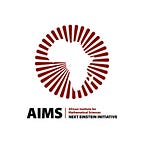Why the poorest people deserve the best science too
Research is disproportionately focused on diseases that affect wealthy countries, Covid-19 as a typical example. This leads to inequality in health knowledge as disease burden in rich and poor countries are different. The level of sophistication of the scientific approaches also differs which is attributable to the large gap in scientific and technological advancement, human resource, research facilities, research funding and so on. If science and technology is a key factor for disease control, then we might want to ask if science and technology are only for the rich.
Let’s consider as an example, Neglected tropical diseases (NTDs) which affect more than 500 million people in sub-Saharan Africa out of about one billion people that are affected globally. The first question many will ask is what are NTDs?
NTDs are a group of diseases that are “neglected” and affected many of the poorest populations of the world. They are “neglected” means they are reported, diagnosed and treated late. The diseases thrive in areas where access to adequate sanitation, clean water, safe ways to dispose of human waste and healthcare is limited. It can also be found in people that live close to the vectors (e.g., mosquitoes, black flies) that transmit the disease. As a result, people in the poorest and marginalized communities in tropical countries suffer more from it. The most common NTDs are soil-transmitted helminth (STH) infections, schistosomiasis, lymphatic filariasis (LF), trachoma, rabies, scabies, Chagas disease, human African trypanosomiasis and onchocerciasis (river blindness).
Now that you know what NTDs are, the next question you might want to ask is what its impacts are and how can it be controlled?
Many NTDs cause severe pain and long-term disability and lead to death for more than 170,000 people per year. In many people, infection leads to leg deformation and blindness; and in children, it leads to malnutrition, cognitive impairment and stunted growth. Control of these diseases has been scaled-up in recent years, with increased levels of funding from donors. Preventive chemotherapy, through mass drug administration (MDA), is one of the main interventions used to control and eliminate some NTDs to treat populations at risk of infection at appropriate, regular intervals.
Mathematical and statistical modelling has been a vital tool in NTD management. It has been used to understand the geographical variation of the disease, identify areas of a high burden of the disease, provide insight into the impact of different interventions, and evaluate progress towards the elimination of the disease.
In particular, mathematical models have been used to understand the transmission dynamics of these diseases, the effort required to control them, evaluate the effect of different interventions and provide evidence on how to eliminate or eradicate these diseases. Another advantage of these models is to evaluate actual or potential control measures simply and cheaply, without the need for expensive or dangerous experiments.
In my own little effort as a Statistician, my contribution has been in developing geostatistical methods to map the prevalence of NTDs. The prevalence map has been one of the major tools used by epidemiologist and program managers to define hotspot areas, adjust treatment boundaries, prioritize areas with urgent treatment and evaluate the progress towards elimination.
Due to the pandemic, most people are now more enlighten on the role of mathematical and statistical modelling in the control of diseases. For example, the popular basic reproductive ratio, R0 utilised by most countries to understand the transmission dynamics of Covid-19 and the pool testing strategy used to identify Covid-19 cases in Rwanda.
After the pandemic, all the various methods used must be extended to the NTDs space. Also, with different African countries innovating different quantitative methods to control covid-19 is a revelation that African researchers can creatively champion the control of the diseases that affects their people that live in the marginalized communities.
Written by Dr Olatunji Johnson (AIMS Tanzania’16 Alumnus)
Dr Olatunji Johnson is Biostatistician at CHICAS research group, Lancaster Medical School, Lancaster University, UK. His research focuses on the development and application of novel geostatistical methods to global public health problems.
